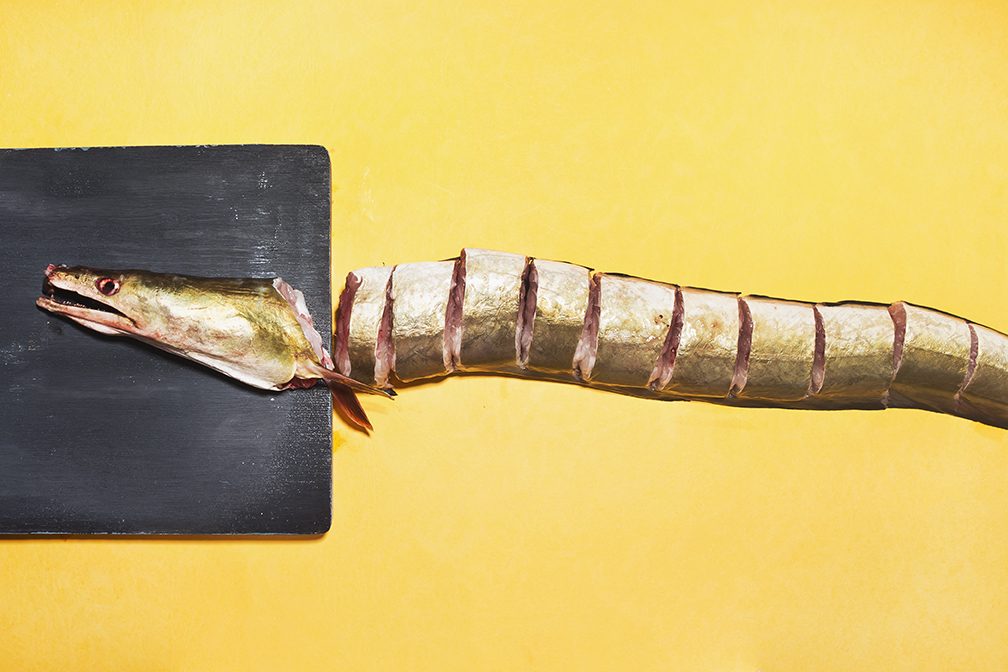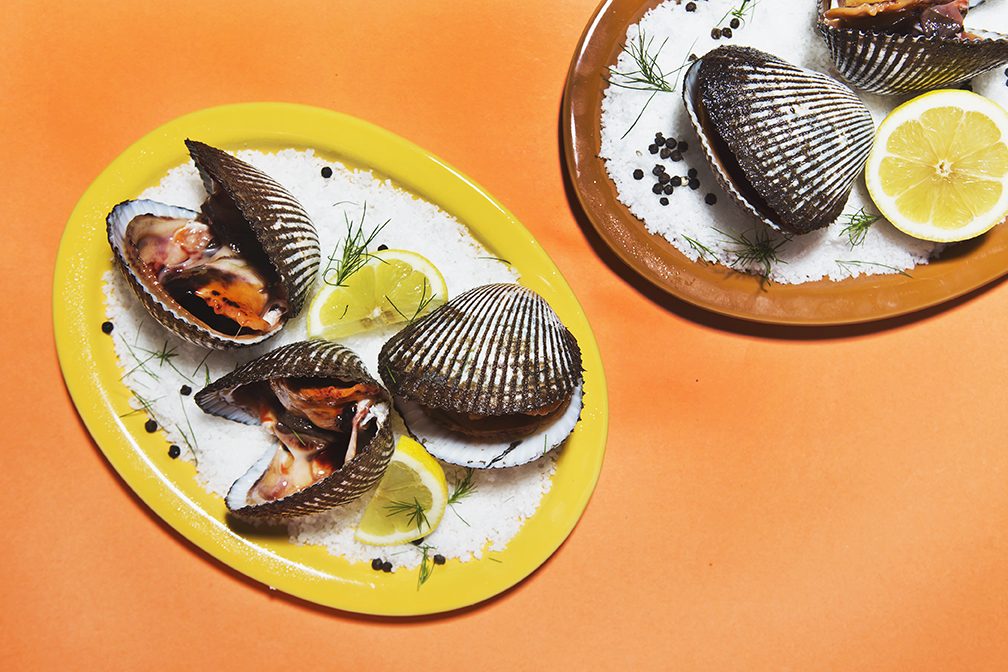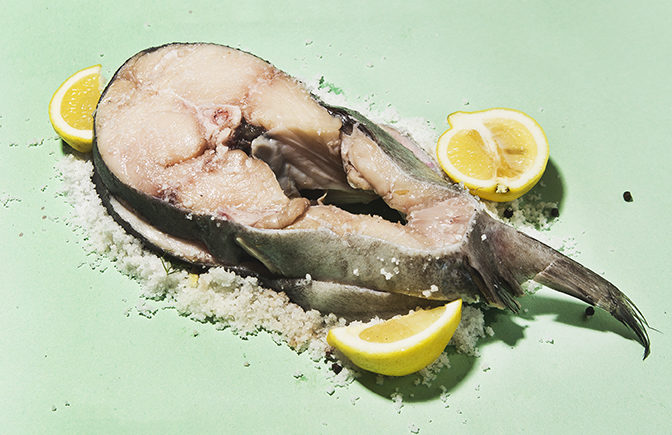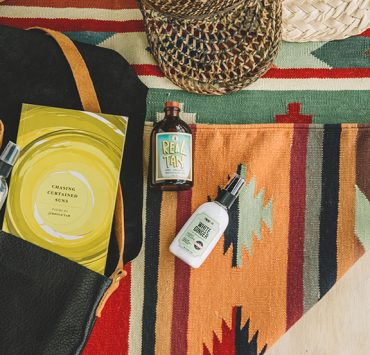Belt fish

If you go to a dampa and ask for a belt fish, you wouldn’t be able to find it for tinderas know it as dagat ahas, due to its resemblance to the snake. Its long body (longest recorded belt fish was found to be seven feet long) is made of delicate white meat.
How to prepare: Its clean flavor goes well with rice and citrus. Clean the fillet before steaming. Top with simple ingredients like garlic, ginger or scallions. Ten minutes oven time and it’s ready to eat. Squeeze a little lemon to finish.
Fish egg sac

Inside the fleshy pink sac of a fish lies a delicacy so rich that it is only meant to be eaten in small portions—on top of sushi, a slice of cheesecake, or as a dip for chips. But the sac, as if roe isn’t already rich enough, when buttered, becomes a totally explosive dining experience.
How to prepare: Melt butter in a small skillet and add the egg sac. Cover and let cook for about three minutes then carefully turn over and sauté on the second side for another three minutes. Serve with lemon wedges.
Batotoy

Available at your local dampa, the batotoy is not to be confused with a clam—although it does share a resemblance. Better known as cockles in other parts of the world, these small, heart-shaped shells contain a delicate morsel of flesh that can be eaten raw, steamed, or boiled.
How to prepare: Cockle shells are often full of sand so it’s best to soak them in fresh water for several hours before eating. It’s best served raw with vinegar—an exotic summer dish to whet the appetite.
Gindara

You’d be surprised to find that the sablefish or gindara can be as heavy as 10 pounds and is found deep in the waters off the Pacific coast. The white fleshy meat is soft in texture and comes with a warning: it’s high in fat. So it is best shared or eaten in small portions.
How to prepare: Gindara takes time to absorb marinades so keep it soaked in your flavor of choice (like salt and pepper, or a miso glaze) before grilling.
White clams

If you want to be more scientific, call them bivalve molluscs. These shells, available almost any time of the year in your local grocery store, are lean sources of protein and omega-3 fatty acids, which makes them good for the heart.
How to prepare: Soothe a sore throat with a ginger clam soup. Bring water to boil and add the ginger and clams. Cook for about five minutes or until clams open.
This story was originally published in Northern Living, May 2015.
Writer: BEVERLY DALTON
STYLING CHARLIE CARBUNGCO
PHOTOGRAPHY GABBY CANTERO



